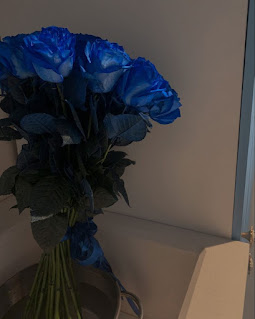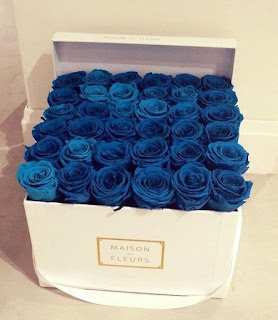Blue Roses
Do not occur naturally in nature, so they have been created through a combination of genetic engineering and dyeing techniques. As such, they do not have the same well-established range of meanings as naturally occurring rose colours. However, blue roses have generally come to symbolize mystery, the unattainable, and the extraordinary. They often represent something unique and rare, as they are not found in nature.
The meaning of a blue rose can also be influenced by cultural or personal interpretations. In some contexts, they may be associated with reaching the impossible or a sense of wonder and intrigue. Blue roses are often used to convey a sense of mystery or to express that something is too good to be true.
While blue roses may not have a long history of specific meanings like other rose colours they are a popular choice for unique and special occasions or to convey a sense of fascination and wonder.
There are several types of blue roses, each with its unique shade and method of cultivation. These blue roses are typically created using genetic modification and selective breeding techniques. Here are some well-known types:
1. Applause Blue Rose:
This rose has a vibrant, deep blue colour and is often considered one of the first commercially available blue roses.
2. Suntory Blue Rose applause (R) TBR23:
This is another variety from the Suntory breeding program. It's known for its striking blue colour and is often used for special occasions.
3. Blue Moon Rose:
This rose variety has a lavender-blue hue and is bred to have a cooler tone compared to some other blue roses.
4. Adelaide Hoodless Blue Roses:
These blue roses have a silvery-blue shade and are named after a Canadian educator and reformer.
5. Miracle Blue Rose:
This variety was developed by Florigen and has a deep blue colour with a hint of purple.
6. Blue Nile Roses:
Blue Nile roses have a rich, dark blue colour and are often used for special events and occasions.
It's important to note that while these blue roses are visually striking and unique, they are not naturally occurring. They have been created through genetic engineering and selective breeding to achieve their blue colouration The meanings associated with blue roses, as mentioned earlier, are generally tied to their uniqueness and rarity rather than specific cultural symbolism.
Blue roses are often associated with mystery, the unattainable, and the impossible. Unlike other more common rose colours like red, which symbolize love, or white, which symbolize purity, blue roses don't naturally exist in nature. As a result, they have been used as symbols of the unattainable or the mysterious. They can also represent a sense of longing or the idea of achieving the impossible, as blue roses are often seen as a symbol of something rare and unique. Additionally, blue roses can symbolize a sense of mystery or the unknown, making them a popular choice in art, literature, and symbolism.
Certainly, here are five meanings that a blue rose can represent:
1. Mystery and Intrigue:
Blue roses are often associated with mystery, making them a symbol of the unknown and enigmatic aspects of life.
2. Unattainable Love:
The rarity of blue roses in nature has led them to symbolize unattainable or impossible love, representing a love that is hard to achieve or maintain.
3. Desire for the Impossible:
Blue roses can also symbolize the human desire to achieve the unattainable or to reach for the impossible.
4. Hope and Possibility:
They can represent hope and the belief that even the most challenging goals and dreams can be realized, much like finding a naturally blue rose.
5. Spiritual Quest:
In some contexts, blue roses may symbolize a spiritual or metaphysical quest for truth, enlightenment, or deeper understanding.
These meanings can vary depending on cultural and personal interpretations, but they capture some of the common symbolic associations of blue roses.
Also see;






No comments:
Post a Comment